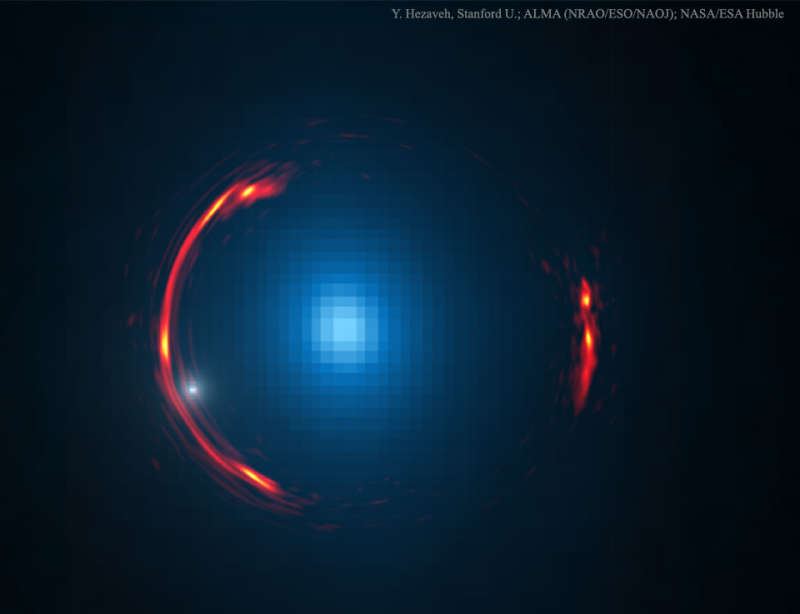Credit & Copyright: Y. Hezaveh
(Stanford)
et al.,
ALMA
(NRAO/ESO/NAOJ),
NASA/ESA
Hubble Space Telescope
Explanation:
Can one galaxy hide behind another?
Not in the case of
SDP.81.
Here the foreground galaxy, shown in blue in an image taken by the
Hubble Space Telescope, acts like a huge
gravitational lens,
pulling light from a background galaxy,
shown in red in an image taken in
radio waves by the
Atacama Large Millimeter Array (ALMA), around it, keeping it visible.
The alignment is so precise
that the distant galaxy is distorted into part of a
ring around the foreground galaxy, a formation known as an Einstein ring.
Detailed
analysis of the
gravitational lens distortions
indicate that a small dark satellite
galaxy
participates in the deflections, bolstering indication that many
satellite galaxies are quite dim and dominated by
dark
matter.
That small galaxy is depicted by a small white dot on the left.
Although spanning only a few arcseconds,
the featured Einstein ring is really tens of thousands of
light years across.
Comments, questions? Just click the Discuss link two lines below.
1999 2000 2001 2002 2003 2004 2005 2006 2007 2008 2009 2010 2011 2012 2013 2014 2015 2016 2017 2018 2019 2020 2021 2022 2023 2024 2025 |
Январь Февраль Март Апрель Май Июнь Июль Август Сентябрь Октябрь Ноябрь Декабрь |
NASA Web Site Statements, Warnings, and Disclaimers
NASA Official: Jay Norris. Specific rights apply.
A service of: LHEA at NASA / GSFC
& Michigan Tech. U.
|
Публикации с ключевыми словами:
gravitational lens - dwarf galaxy - кольцо Эйнштейна - гравитационное линзирование - гравитационная линза
Публикации со словами: gravitational lens - dwarf galaxy - кольцо Эйнштейна - гравитационное линзирование - гравитационная линза | |
См. также:
Все публикации на ту же тему >> | |
